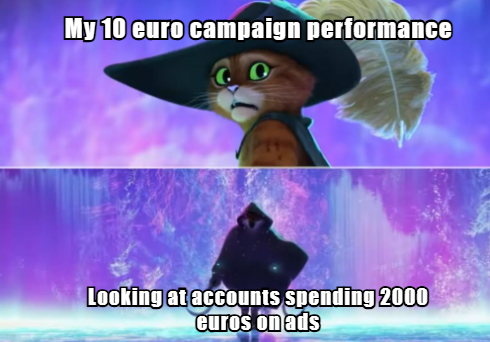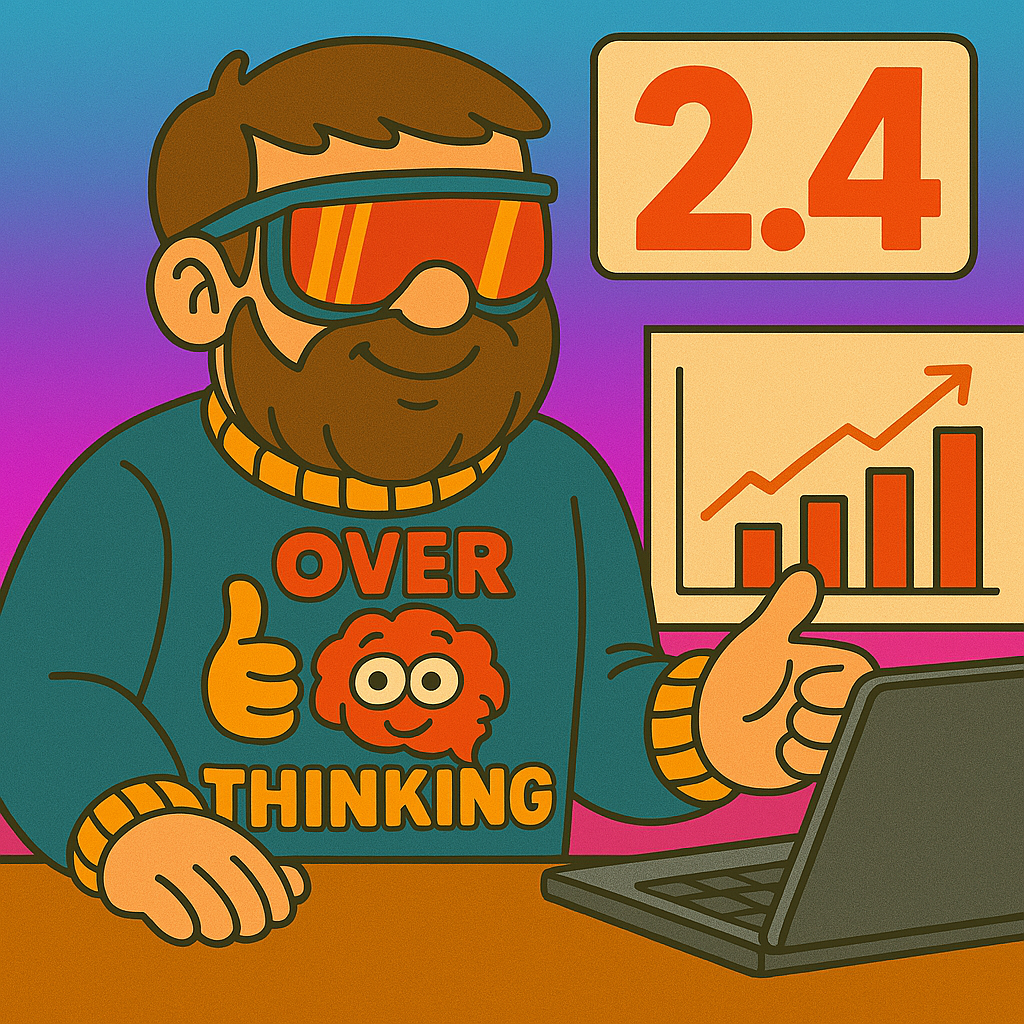Alright, we’ve arrived at the big money question. You’ve got your targets, tracking’s ready, the landing page is polished. Now, how much cash do you actually need to commit to get started with paid ads?
You’ve probably heard advice like “start small, you can begin with just $10 a day!” or maybe you read back in Article 1.1 where I acknowledged starting with €200 is technically possible. Let’s get brutally honest about that now.
The Hard Truth About Starting Too Small
Yes, you can launch a campaign with a tiny budget. But should you? Based on my experience helping businesses scale with ads, starting with just a couple hundred euros is setting yourself up for a very difficult, high-pressure situation.
Why? Because a budget that small gives you exactly one shot.
Think back to our sneaker store example (Article 2.1 & 2.3). We calculated a target CPA of €47. If your total starting budget is only €200:
Best Case Scenario: If everything is perfect – your tracking, your landing page conversion rate (that assumed of 2% CR), your ad creative, your targeting – you might squeeze out 3, maybe 4 sales (€200 / €47 ≈ 4.25).
Profit? Barely. Those 4 sales at €100 AOV bring in €400 revenue. Your COGS/fees were €33 per order (€30 + €3), so €33 * 4 = €132. Your ad cost was €200. Total costs = €132 + €200 = €332. You made €400 – €332 = €68 profit. Great, right?
The Hidden Costs: But wait. That €68 profit doesn’t account for the time you spent setting everything up, writing copy, creating graphics, packing orders. What if just one of those customers requests a refund? Suddenly, your tiny profit margin evaporates, and you’re likely in the negative.
What If It Doesn’t Work? What happens if you spend that €200 and get zero sales? Or only one? You’re out of budget. You have no more chances to test different ads, different audiences, or fix the funnel issues you might have discovered. Game over before it really began.
Starting too small forces you to be perfect on your first try, which rarely happens. It ignores the value of your time and the real-world risks like returns.
My Recommendation: Aim for €2,000 for Your Initial Testing Phase
This might sound like a lot compared to the “start with $5” advice, but hear me out. I recommend aiming for an initial testing budget of around €2,000.
Why €2,000? It Buys You Runway and Data.
This isn’t about guaranteeing profit. It’s about giving yourself a realistic chance to figure things out. A €2k budget allows you to:
Run Meaningful Tests: You can test different ad approaches, audiences, or landing page variations without running out of money after a day or two.
Gather Enough Data: You can spend enough to get statistically relevant feedback. Getting 0 sales from €50 spend tells you very little. Getting 5 sales from €500 spend starts to give you reliable CPA data. You need enough volume to see real patterns.
Survive Imperfection: If your first test doesn’t hit the target CPA, you have budget left to analyze why (using the funnel metrics from 2.3), make adjustments, and try again. You get multiple shots, not just one.
Evaluate Mid-Stream: After spending, say, €300-€500 of that €2k, you can pause and evaluate. Are things heading in the right direction (even if not profitable yet)? Or is it clear something is fundamentally wrong? A larger budget allows for these crucial check-ins.
Be Ready to Scale (If It Works): What happens if your initial test is successful and hits your target CPA? If you only budgeted €200, you now have a winning formula but no fuel left in the tank. A €2k starting pot means if you find something that works early, you have the immediate funds to start scaling it up carefully.

This €2,000 figure is a solid ballpark for serious testing, regardless of your specific target CPA. It’s about having enough budget to run ads long enough and broadly enough to learn effectively and get reliable answers based on data, not just hopeful guesses after spending pocket change.
Getting your initial budget right, focused on learning and data gathering, is the final piece of the preparation puzzle. With your goals set, tracking in place, landing page checked, and a realistic test budget defined, you’ve laid the essential groundwork.
Now, you’re actually ready to step into the ad platform. In Section 3, we’ll dive into Launching Your First Campaign, focusing initially on Facebook Ads for simplicity. Let’s get those ads live!

Leave a Reply